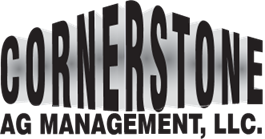Considerations for Breeding Dairy Cattle to Beef Breeds for Meat Production
Producing beef x dairy cross calves has the potential to increase the market value of these calves compared to straight bred dairy bull calves. However, as the supply of beef x dairy cross calves increases, it’s reasonable to assume buyers will become more discerning. Dairy producers can stack the odds in their favor with a thoughtful beef sire selection.
In Considerations for Breeding Dairy Cattle to Beef Breeds for Meat Production, we discuss the strengths and weaknesses of Holstein steers, introduce dairy producers to EPD’s (beef genetic proofs), and provide suggestions for beef sire traits to consider when applied to dairy cattle.
By choosing beef sires that improve upon the weaknesses of dairy steers, using beef on dairy can improve feed efficiency, rate of gain and reduce days on feed. Wisely incorporating beef genetics can also improve carcass characteristics over straight bred dairy by increasing ribeye size and changing the ribeye shape, increasing muscling, and moderating frame size while maintaining the marbling ability of dairy animals.
Read the full article by Ryan A Sterry and Amanda L Cauffman with Livestock Division of Extension











